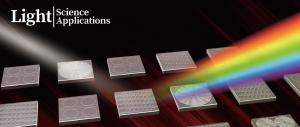A wideband, high-resolution vector spectrum analyzer for integrated photonics
USA, August 30, 2024 /EINPresswire.com/ -- Dispersive devices and broadband laser sources are central building blocks for modern optical communication and processing systems. Urgent and demanding requirements have been placed today on spectrum analysis of these devices, for ever-increasing spectral bandwidth and frequency resolution. Current spectrometers have limitations to address these requirements. A research team in China has developed a novel “vector spectrum analyzer” that is capable of characterizing passive optical devices and active laser sources. This technique provides an invaluable approach for integrated photonic systems and applications including sensing, communication, and imaging.
The analysis of light and its propagation in media is fundamental in our information society. Human eyes – which we use to perceive the world – are probably the most sophisticated yet sensitive optical spectrum analyzers (OSA). Our eyes distinguish different objects based on their colors and tell the distance from the objects based on the phase difference of light reaching the two eyes. In modern science, optical spectrum analysis has been arguably the most powerful approach for discovering and understanding matters. For example, the hyperfine energy structures of atoms are resolved by laser spectroscopy, which form the basis of optical clocks. Spectrum analysis of stellar light allows understanding of the atmosphere components and even the measurement of cosmological redshift to infer the universe’s expansion history. Atom-trap trace analysis of the fluorescence of specimens allows radiometric dating at age scales far beyond the possible reach of 14C.
Critical to OSA is the capability to resolve tiny differences in optical frequency and phase measurement. Today, many kinds of spectrometers have been invented and developed, providing us with versatile and sensitive diagnostic tools. Yet, urgent and demanding requirements have been placed on spectrum analysis with ever-increasing spectral bandwidth and frequency resolution. This is due to the proliferating data and information from 5G, the Internet of Things, and rapidly evolving photonic quantum computing and sensing. Spectrum analysis with wide bandwidth and fine resolution is especially critical for broadband laser sources that carry massive information, and for dispersive devices used in information processing systems. Moreover, special requirements are raised on “vector analysis”, i.e., the analysis of the device’s phase response where extra information is encoded. However, current spectrometers have limitations to address the challenges mentioned above.
In a new paper (doi: https://doi.org/10.1038/s41377-024-01435-z) published in Light: Science & Applications, a team of scientists from Shenzhen International Quantum Academy in China has developed a novel vector spectrum analyzer (VSA) that is capable of characterizing passive optical devices and active laser sources in a single setup. Such a dual-mode VSA can measure loss, phase response and dispersion properties of passive devices. It also can coherently map a broadband laser spectrum into the RF domain. The VSA features a bandwidth of 55.1 THz (1260 to 1640 nm), frequency resolution of 471 kHz, and dynamic range of 56 dB. Additionally, the VSA can also perform LiDAR with a distance resolution of 7.6 μm and a precision of 20.3 nm.
The VSA’s basic principle is as following. It is based on fast sweeping laser, which is sent to and transmits through the sample. Since the laser frequency is calibrated on the fly, after tens of second sweeping time, the transmission, loss, intensity, phase response, and dispersion of the sample are precisely extracted. Since the VSA is fiber-based, it is compact and robust. It requires neither high-speed modulators and photodetectors, nor any active feedback control. Therefore, the system is compact, robust, and transportable for field-deployable applications. The reported technique presents an innovative approach for device analysis and laser spectroscopy and can play a crucial role in future photonic systems and applications for sensing, communication, imaging, and quantum information processing.
Besides characterization of passive elements and broadband laser sources for integrated photonics, the team is currently applying their VSA for time-stretched systems, optimized optical coherent tomography, linearization of FMCW LiDAR, and resolving fine structures in Doppler-free spectroscopy.
DOI
10.1038/s41377-024-01435-z
Original Source URL
https://doi.org/10.1038/s41377-024-01435-z
Funding information
This work was supported by the National Natural Science Foundation of China under Grant No. 12261131503; Shenzhen-Hong Kong Cooperation Zone for Technology and Innovation (HZQB-KCZYB2020050); the Guangdong Provincial Key Laboratory (2019B121203002) and the China Postdoctoral Science Foundation under Grant No. 2022M721482.
Lucy Wang
BioDesign Research
email us here
Legal Disclaimer:
EIN Presswire provides this news content "as is" without warranty of any kind. We do not accept any responsibility or liability for the accuracy, content, images, videos, licenses, completeness, legality, or reliability of the information contained in this article. If you have any complaints or copyright issues related to this article, kindly contact the author above.

